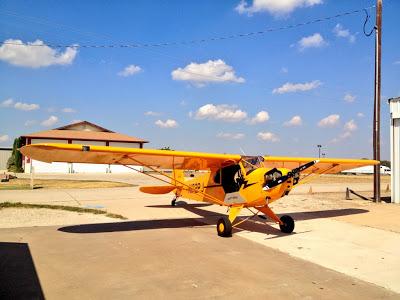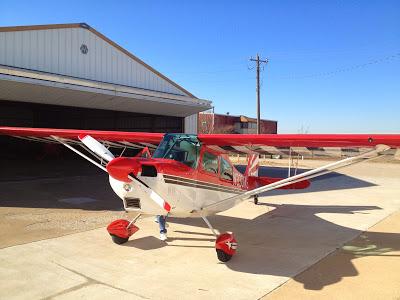One year, dad decided to break up the monotony of that family trek and began the process to get checked out in a Beechcraft Baron offered for rent at a local FBO. With years of airline flying and a career as an Army aviator under his belt, he was more than qualified to rent the plane and easily surpassed the minimums mandated by the insurance company...but that was all on paper.
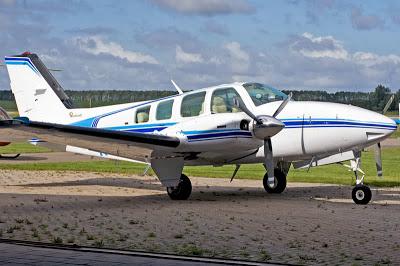
My favorite part of the story is that the CFI who checked dad out in the airplane didn't bother to ask my father about his experience before they got started. Instead of showing even a modicum of respect for a seasoned pilot and Army veteran, the CFI treated dad as if he had never flown anything larger than a Cessna 152. That was just fine with dad, who never offered any information that would have contradicted his instructor's hastily made assumptions. When the checkout was complete, the CFI asked for dad’s logbook then found himself tasting the flavor of his own shoe as he searched for a place to add the sign-off. Dad was and still is a humble guy, and although he may have enjoyed watching the guy squirm, he never said a word.
The reality though, is that airline pilots who do not regularly fly small planes, myself included, often struggle with the transition. We get used to main wheel touch down while the pilot seat is still 30-40 feet in the air. We get used to flying a jet in which the slowest practical speed during approach easily exceeds the maximum allowable speed of many small airplane. We get used to auto-brakes, auto-spoilers, auto this and auto that. We get used to having a dispatcher who plans the flight, a load planner who computes the weight and balance and a first officer who pre-flights the airplane and prepares the cockpit. Airline pilots tend to get a little spoiled by the niceties of the job and dad was no exception.
Approaching our destination on that first flight as a family, dad started his descent, began to slow the airplane early in an attempt to avoid shock cooling the engines, did a nice job of entering the pattern and made all the necessary radio calls for an uncontrolled airport, but it was the approach and landing that stuck in my memory. The approach speed of the Boeing 767 dad flew at work was around 150 knots…and with thousands of hours in that seat, he found it difficult to slow past what felt like normal. Needless to say…we came in a little hot.
The airplane I fly today verbally counts down the last 50 feet of altitude during an approach and landing. I know I've miss judged a landing and flared too early when the voice pauses at 10 feet. 50, 40, 30, 20.......big pause......10.......uh oh. If the Baron had been capable, it would have paused at about 30.
An airplane tends to float in ground effect if flare, thrust and or speed are excessive, which “eats up” runway in a hurry. Deceleration on the runway is about three times greater than in the air, so with excess airspeed, it's better to touchdown as near to the touchdown zone as possible, rather than floating to bleed off airspeed. For example, losing 10 knots requires three to four times more runway in the flare than on the ground. But flare and float is what we did. The runway was roughly 5,000 feet long...plenty of runway for a Beech Baron...and we used it all.
Like most pilots, I got my start in small planes. My Private Pilot training was accomplished in a Cessna 152, my Instrument in a Cessna 182 and my Commercial in a Cessna 210. I flew freight in a combination of small planes including the Baron and spent several thousand hours building time in medium sized turboprops before landing a job with a major U.S. airline. Up until about 15 years ago when I got my current job, I made a regular habit of crawling into the cockpit of various small airplanes, but over the years, the cost of raising a family, saving for college, padding the wedding fund for my two daughters and the endless costs of home ownership began to have an effect on how much general aviation flying I could afford to do. Every year I found it harder and harder to justify the expense of flying small planes and eventually gave it up entirely.
General aviation is good for the soul!
Don't get me wrong, I love flying for the airlines and thank God every day for the opportunity to get paid to do something I love so much, but there's something therapeutic about getting back to the basics. With that knowledge hidden away somewhere in the depths of my subconscious, I recently crawled back into the cockpit of a small plane.
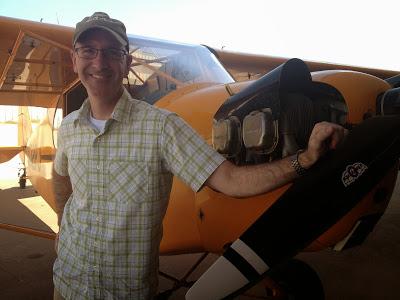
That's me...the goofy dude in front of that pretty little Legend Cub.
With the help of an airline friend and his access to a couple of awesome little airplanes, an American Champion Decathlon and a Legend Cub, I've been going through the same process my dad went through when getting checked-out in the Baron. But instead of flying a cruiser...something designed to get me from point A to point B...the planes I’m flying are just pure fun. I don’t want to talk to air traffic controllers and I avoid tower controlled airports whenever possible. I don’t want an air conditioner or an autopilot. I don’t want or need GPS, TCAS, GPWS or any other commonly known acronym. I want to fly low and slow with the window open and the wind in my hair…if I had any.I must admit, I've shared the same struggles experienced by my father as he checked out in the Baron. My instructor, also an airline pilot, is constantly telling me to manage my speed on final approach and regularly reminds me to resist the temptation to flare when my brain engages its own internal autopilot. The idea that these little airplanes stall at about the same speed that the airspeed indicator comes alive on the Boeing 737 I fly for a living has definitely taken some getting used to.
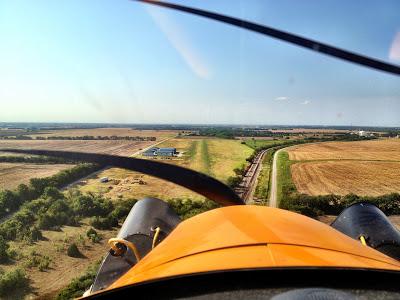
Short final, landing in the grass.
I've found that general aviation is not only good for the soul, but good for my skills as a pilot as well. As airliners have changed, becoming more advanced and computer driven, the pilot’s role in the cockpit has changed as well. My first airline job was in the cockpit of an EMB-120 Brasilia, a thirty seat, pressurized turboprop capable of speeds near 300 knots. With partial glass, an electronic checklist and a radar screen that also displayed VORs and VOR radials, the cockpit was a hybrid of technology that was ahead of its time when introduced in 1985. During the four years I spent on that airplane, I never flew a check-ride with the autopilot engaged. We hand flew the airplane at all times. Climb, cruise, descent and approach…all with the autopilot off…and it wasn't always easy. I've compared hand flying the Brasilia to balancing a spinning basketball on the tip of my finger…a trick I have never mastered.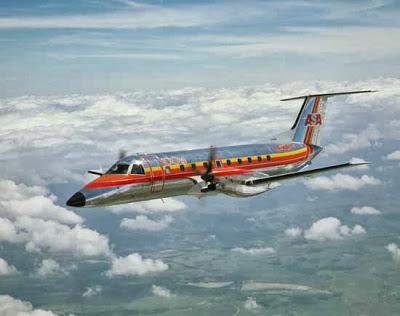
EMB-120 Brasilia in the colors of my former employer.
Initially, flying for the majors wasn't much different. My first job at a major airline was in the cockpit of a Boeing 727. While the autopilot was allowed during certain phases of training, we hand flew all approaches. It’s just the way it was…and it made as much sense to me then as it does now. Pilots need to know how to operate the automation, but they also need to know how to fly the airplane. I think that skill is getting lost as airplanes become more and more technically advanced and pilots become increasingly dependent on automation.Today, during recurrent training cycles, the use of automation is strongly encouraged. I am taught to turn the autopilot on as soon as practical and leave it engaged throughout the approach. The only time I am required to turn off the autopilot is during a single-engine approach and landing, and that’s only because the FAA mandates that I demonstrate the ability to do it on my own.
Personally, I choose to hand fly the airplane more than most of my peers. The first and last thirty minutes of a flight are typically my favorite, because that’s when I actually fly the airplane. Getting back to basics in the cockpit of a small airplane not only emphasized how important it is to keep my skills sharp, but also helped me to fall back in love with the kind of flying that sucked me into aviation in the first place. General aviation is good for the soul.
